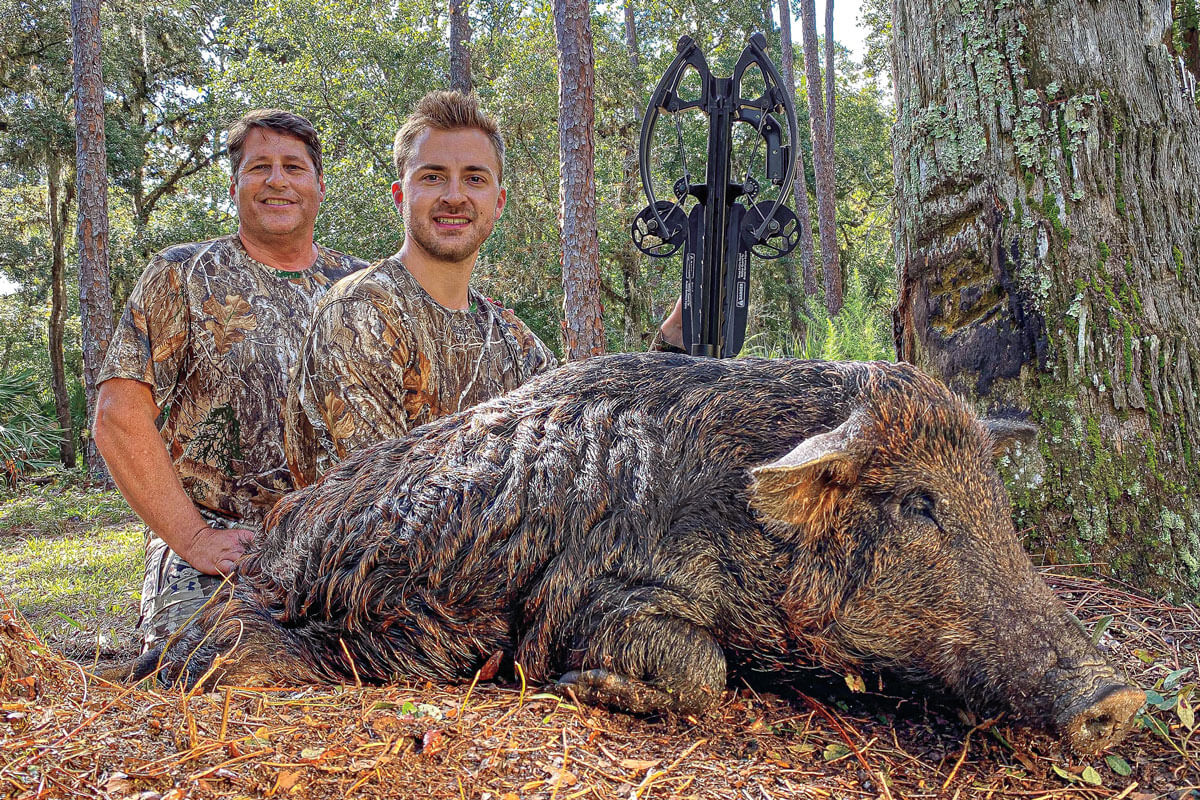
The ultimate goal of every bowhunter is a quick, clean kill. How you accomplish that, within the confines of the regulations, is up to the individual.
Sometimes, we are our own worst enemies. For example, recent crossbow innovations have led to speeds up to 500 fps and rifle-like accuracy, with less than 1-inch groups at 100 yards.
All this sounds great to the crossbow hunter; however, numbers such as these provide grist for the mills of crossbow opponents, and perhaps those unfamiliar with crossbows when taken at face value. It is then left to crossbow proponents to dissect each grain and separate the wheat from the chaff in order to provide a more accurate explanation of the continual advancements in the crossbow world.
We can blame some — but not much — of the misdirection on crossbow manufacturers. They’re in the business of selling bows and accessories, and claims of “bigger, better, faster, stronger” are an effective marketing strategy. It’s human nature that people want the latest, greatest and something better than what they currently have.
It may not be in the manufacturers’ best interest as business owners to add caveats such as, “It’s faster, but aren’t improved accuracy and better odds of a quick, clean kill everyone’s ultimate goal?” Then again, maybe it is. In the meantime, the task is left to crossbow enthusiasts to enlighten the haters and general public.
Enhanced Accuracy
Let’s take a look at accuracy first. Sub-MOA (Minute of Angle) at 100 yards sounds impressive, intimidating and a lot like a rifle. I don’t doubt the claims, but it’s important to note that this is accomplished under controlled circumstances: shooting off a bench, with sandbags and no wind.
Shift to a treestand on a chilly morning when old Mossy Horns steps into your shooting lane and 100 yards might as well be 100 miles. Even inside a shooting house with a shelf or tripod to rest your bow, you’re still shooting at a live target with a propensity to move very quickly at the slightest sound. Despite continued innovations, crossbows are still loud, and bolts are still slow in relation to the speed of sound. A deer standing 100 yards away when you shoot could technically be out of sight by the time your bolt arrives.
Besides, you practice to become proficient and more accurate. That’s the goal of every archer, whether shooting traditional, compound or crossbow equipment. If you hold a weapon that is inherently more accurate, is that not a plus? I mean no disrespect to those willing to take on the added challenge of traditional archery tackle, but it does present a higher probability of error. So, who is the more ethical bowhunter?
Increasing Speeds
One way you accomplish improved accuracy is with increased speed. Faster equals flatter-shooting, with less margin for error and less guesswork on range estimation required. Sound travels at 1,100 fps, but even the fastest crossbow bolts fly at less than half that. A static target won’t move but a deer might, even if it doesn’t react to the shot. Deer are constantly moving because that’s how they avoid danger. Move to the plains where the antelope play, and the problems and need for faster, more accurate bows become greater.
Again, we practice to become more proficient. I know a fair number of compound shooters who practice out to 60, 70 or even 100 yards, but they would never shoot at a deer that far away. It just makes them more accurate when shooting closer distances.
Crossbows and crossbow hunters are similar. Shooters hold a bow that is accurate out to 100 yards, but they exercise restraint based on circumstances and their own limitations.
Can a bolt — or any projectile, for that matter — be “too fast?” From a management perspective, a dead deer is a dead deer, whether it was shot with a longbow, crossbow or a modern sporting rifle. Deer are a public resource, and the choice of weapon used in pursuing them is a personal one. It then becomes a question of ethics and fair chase, and that can be a slippery slope.
Hunting over bait provides a good analogy. Some folks can, some can’t and others simply choose not to. But where it is legal, is it not ethical? In another example, some states allow bait or dogs for bear hunting while others do not.
The Bottom Line
One inherently human flaw is short-sightedness. It comes with age, but so does perspective. I’m old enough to remember a time when compound bows received the same cold reception that crossbows now endure in some circles. I can recall resisting inline muzzleloaders and now I own several. Scopes, laser rangefinders and trail cameras all have their detractors and their fans. Instead of being a curmudgeon and yelling at the crossbow kids to get off your lawn, how about “you do you” and we’ll both be happier.
Tip of the Month
One potential disadvantage of today’s faster crossbows is that you start to lose the ability to follow your bolt in flight and see the point of impact. Lighted nocks represent a simple solution, but make sure you use those designed for faster bows, since older styles may not hold up to the greater energy at the shot.








